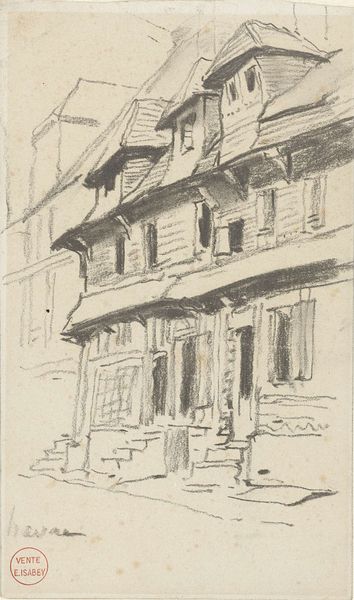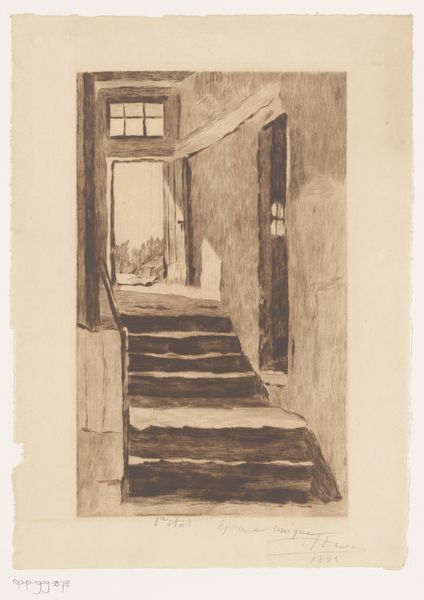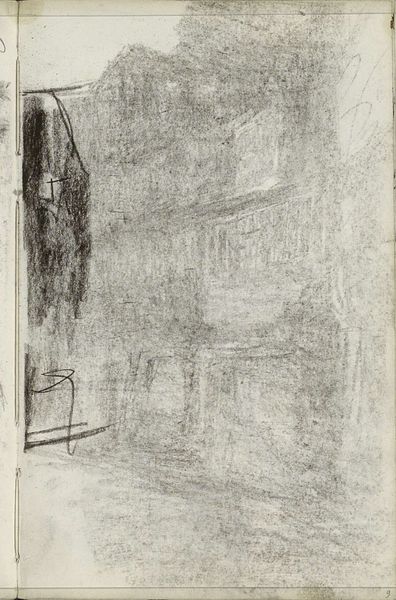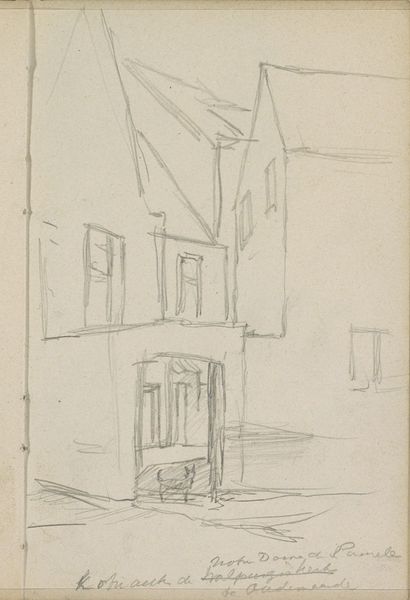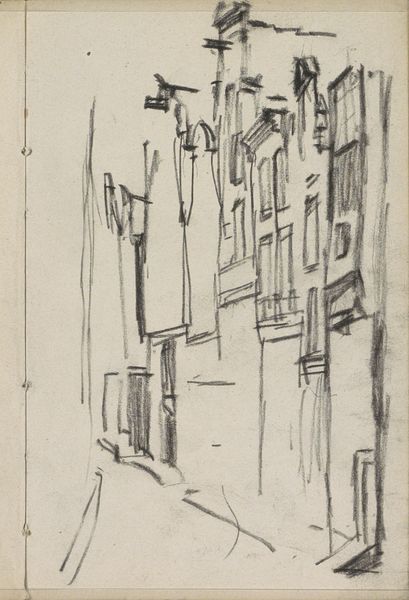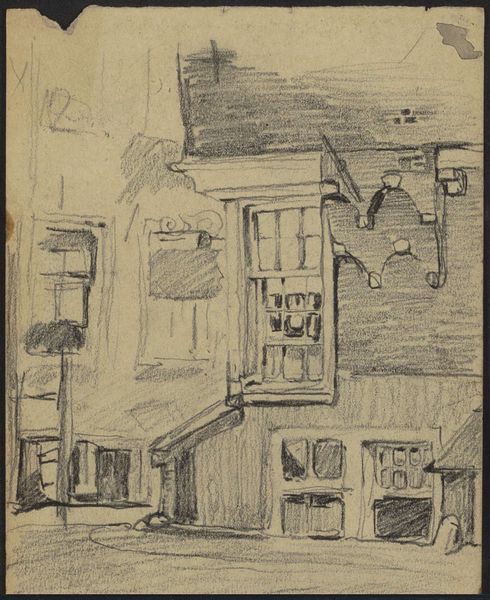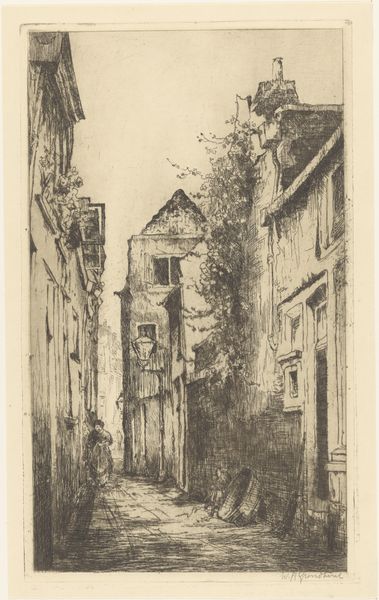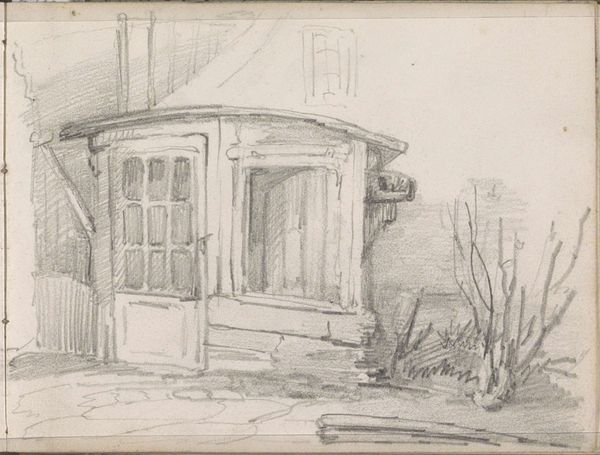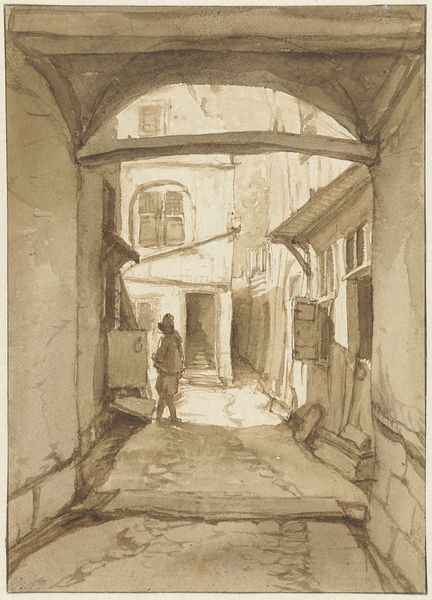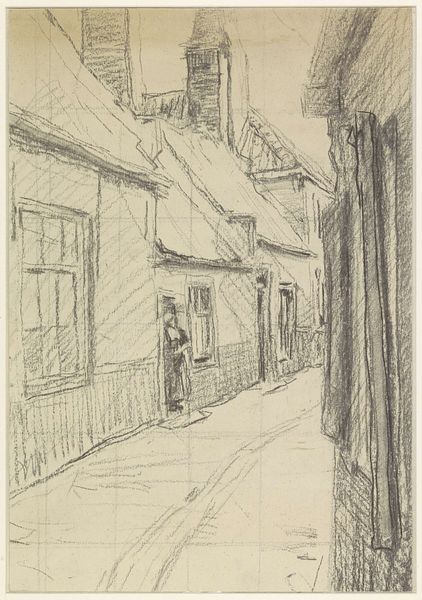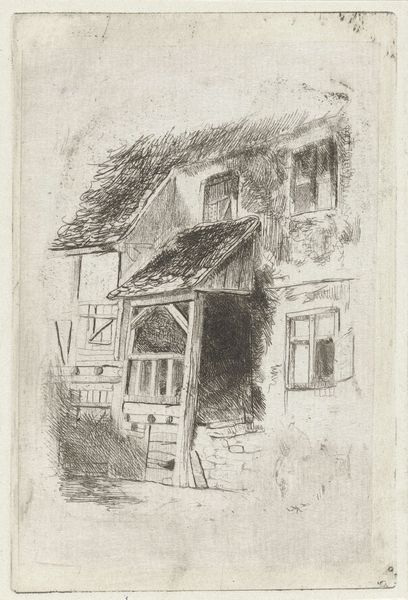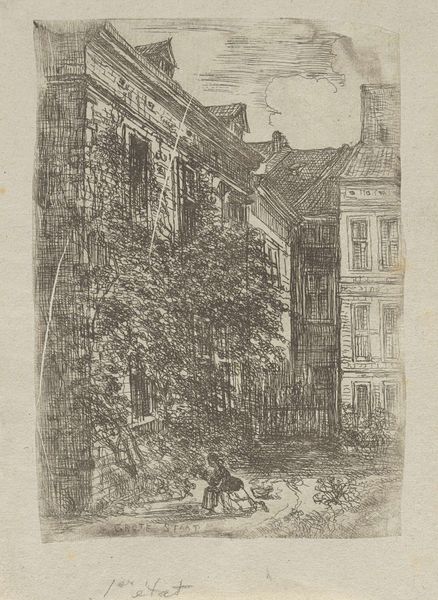
drawing, paper, pencil
#
drawing
#
paper
#
form
#
geometric
#
pencil
#
architectural drawing
#
line
#
cityscape
#
realism
Dimensions: height 244 mm, width 167 mm
Copyright: Rijks Museum: Open Domain
Curator: Here we have Dick Ket's "Part of the Interior of the Church in Hoorn," a pencil drawing from 1928, held here at the Rijksmuseum. My immediate reaction is its subdued solemnity. What captures your attention? Editor: It is so interesting how geometric and subdued it is. I see this emptiness as suggestive of spiritual questioning and how it parallels the changing role of religion during the interwar period in Europe. Curator: Absolutely, and considering Ket's artistic tendencies, the drawing is anchored by a striking application of realism and meticulous attention to line and form, typical of his mature works. Notice the architectural drawing perspective? Editor: I think it interesting to note Ket was very limited and his health greatly influenced his works. In this work I wonder, could the almost barren church and simple composition suggest a world diminished by illness? Curator: That's astute. Viewing this through the lens of the artist's physical confinement provides a powerful context. The interplay of geometric shapes contributes to the sense of order amidst the spare interior and yet creates this odd quiet solemnity. The work becomes this interesting balance. Editor: Right. Beyond his biography, there is this theme. Given Hoorn's rich mercantile past during the Dutch Golden Age, does this minimalist depiction, even without the explicit critique, present itself as an allegory of a society wrestling with modernity? How did societal shifts in art influence his interpretation? Curator: The perspective suggests depth but perhaps something is lost by his choices, too. Your point about social commentary makes a critical addition, because if not for that addition, there are elements easy to miss. Editor: It certainly forces you to consider it, but by understanding these things maybe you will come closer to his feelings during that period of his life. So thank you. Curator: Thank you for your rich historical perspective on the social period it was made in, I would have certainly missed all of those meanings, before only focusing on the artwork's details.
Comments
No comments
Be the first to comment and join the conversation on the ultimate creative platform.
